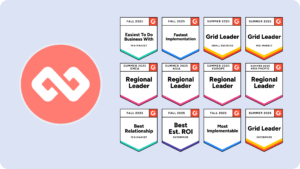This question is pretty central to any mentoring program: how long should mentorship actually last?
And while there is no definitive answer (somewhat like, how long is a piece of string), and while many mentorships often last indefinitely, there are some timeframes and best practices that make a lot of sense when seeking to run a mentoring program and establish some semblance of structure and cadence.
It’s also best to look at mentorship as a journey with four distinct stages, stages that come with relatively predictable timeframes.
*Note: These phases are semi-dependant on how often the mentor and mentee meet; they makes the most sense for a meeting/interaction cadence of between once and twice per month.

The Four Phases of Mentoring Relationships
Phase 1: Foundation (1-2 months)
The foundation phase of the mentorship is all about creating a foundation for a good relationship. It’s about setting early expectations (such as how often you will communicate and through what channels), and creating goals and objectives for the next stage of the mentorship.
Success in the foundation stage requires strong input and activity from both the mentor and mentee to establish a great connection and create a framework so that future interactions are fruitful.
Phase 2: Progress (2-5 months)
Phase two is where a lot of the action takes place. It is during this pivotal phase that the mentee begins to pursue the goals and objectives set in the foundation stage.
This is the stage where the mentee becomes the catalyst of success – working hard to create action – which enables reaction from the mentor. If the mentee is stagnant during this period, the mentor will have trouble engaging and providing any real value.
Phase 3: Analysis and Revision (5-9 months)
Phase three is the phase at which mentoring really becomes mentoring. It is the phase whereby the mentor can start to impasse their wisdom and experience onto the mentee’s behaviours and outcomes. It is also the period of the mentorship where the mentee and mentor can work together to revise the goals and objectives of the mentorship – and work together to create working plans for the months and years ahead.
During this stage, the mentor becomes more responsible for a healthy mentorship. If the mentee is actively pursuing their activity and seeking feedback, the mentor should work hard to stay aligned with progress and provide really valuable feedback and analysis.
Phase 4: Dormancy (9+ months)
The reason phase 4 is called dormancy and not death or decline is that every mentorship will naturally taper off over time – but not end. Each mentor only has so much experience and advice to offer, limited bandwidth, and certain domain expertise.
But all good mentorships result in a relationship that can be renewed and leaned on at any point in time. In the same way that the mentee progress and accumulates new experiences, so does the mentor. Mentees will likely find that their great mentors can offer new insights as they become executives, business owners, and even more well-traveled.
The 9-12 month mark is typically a great time to set the mentorship on the back-burner and seek mentorship and guidance from someone who can work with you on progressing from the new plateau or challenges you have now reached.
It’s important to note that none of these phases are mutually exclusive (more than one can be occurring at any one point in time e.g making progress and analyzing this progress simultaneously).
It is also important to note that there is absolutely no reason that an individual cannot be engaged in a number of different phases with a number of different mentors.
At Mentorloop we like to think of mentors as a board of personal advisors. Just as a company has a board that oversees the operations, outcomes, and accountability of an organization – a personal advisory board can do this for an individual to great effect.
Ideally, each individual will be constantly building out their early phase mentorships, while maintaining a number of strong connections with previous mentors who they can turn to when desired.
When running a mentoring program at your organization, seek to create mentoring relationships which last for at least 9 months (up to the analysis phase), after which people naturally enter the maintenance phase.
To get even more out of your mentoring program, initiate new matches for every individual after 9 or so months so that each individual is expanding their network and expanding opportunities for growth indefinitely.
Running a perpetual mentoring program in this way, and creating a true culture of mentorship (without any effort) can be easily achieved through the use of mentoring software features like Self Match, which enable individuals to browse and connect with a new mentor at any point in time – resulting in incredible outcomes for individuals and organisations.
Factors Influencing the Length of a Mentorship
Several factors can influence the length of a mentorship:
- Specific Goals: The mentee’s objectives and the complexity of those goals can determine how long it takes to achieve them. Some goals may require ongoing guidance and support over an extended period, while others may be more short-term.
- Availability: The availability and commitment of both the mentor and mentee play a crucial role in the duration of the mentorship. If either party has limited time or availability, it may affect the overall duration.
- Learning Style: Every mentee has a unique learning style. Some individuals may require more time and repetition to fully grasp concepts, while others may be quick learners. The mentor should adapt their approach to accommodate the mentee’s preferred learning style.
- Relationship Dynamics: The strength of the bond between the mentor and mentee can influence how long the mentorship lasts. A strong connection built on trust and mutual respect can encourage a long-term relationship.
Challenges of Long-Term Mentorship
While long-term mentorships can be extremely rewarding, they also come with their set of challenges:
- Commitment: Maintaining a long-term mentorship requires a significant commitment from both the mentor and mentee. It demands sustained effort, dedication, and communication to ensure continued growth and progress.
- Changing Needs: Over time, the mentee’s goals and needs may evolve. It is essential to regularly reassess and adjust the mentorship to ensure it remains relevant and beneficial to the mentee’s current situation.
- Motivation: As with any relationship, there may be periods of decreased motivation or challenges that arise. It is important for both the mentor and mentee to find ways to overcome these obstacles and reignite their enthusiasm for the mentorship.
Strategies for Maintaining a Successful Mentorship
It is crucial to implement strategies that promote a thriving mentorship, especially when aiming for a long-term relationship:
- Regular Check-Ins: Consistent communication and check-ins are essential to maintain the momentum and ensure both parties are aligned with their goals. Be intentional with your mentoring time.
- Goal Setting and Progress Tracking: Setting clear goals and regularly tracking progress helps keep the mentorship focused and allows both parties to celebrate achievements.
- Continual Learning Opportunities: Exploring new learning opportunities together, such as attending industry events or participating in workshops, can foster growth and provide fresh perspectives.
- Honest Feedback: Providing constructive feedback and creating a safe space for open and honest discussions strengthens the mentorship and promotes growth for both the mentor and mentee.
The Impact of Mentorship Duration on Results
The duration of a mentorship can significantly impact the results and outcomes achieved. Short-term mentorships can be effective for specific skill development or immediate objectives. They provide focused guidance and targeted support.
On the other hand, long-term mentorships allow for a more extensive and profound relationship, enabling mentees to gain valuable insights and wisdom from mentors over a more extended period. These mentorships foster holistic growth and can have a transformative impact on the mentee’s personal and professional life.
Identifying When to End a Mentorship
Knowing when to end a mentorship is essential to ensure both parties continue to grow and evolve:
- Goal Achievement: If the mentee has successfully achieved their goals or feels confident in their ability to continue progressing independently, it may be time to conclude the formal mentorship.
- Natural Transition: Sometimes, the ending of a mentorship occurs naturally as the mentee transitions into a new phase, such as starting a new job or pursuing a different career path.
- Mutual Agreement: It is important for the mentor and mentee to have open and honest discussions about the mentorship’s future. If both parties feel they have achieved their objectives or are ready to move on, it may be time to conclude the mentorship.
Maximizing the Benefits of Mentorship Over Time
To maximize the benefits of mentorship over time, consider the following:
- Continuous Learning: Encourage a mindset of continuous learning and growth, both for the mentor and mentee. Embrace new challenges and opportunities to ensure growth remains a priority.
- Expand the Network: Actively seek opportunities to introduce the mentee to other mentors, colleagues, or professionals in their field. Broadening their network can provide new perspectives and open doors for further growth.
- Pay It Forward: Encourage the mentee to become a mentor themselves, passing on the knowledge and wisdom they’ve acquired. Paying it forward not only benefits others but also reinforces and solidifies the lessons learned during the mentorship.
How To Express Gratitude for Mentorship
Showcasing gratitude for the valuable guidance received from a mentor is essential. Here are some ways to express appreciation:
- Personalized Thank You: Write a heartfelt thank-you note expressing specific examples of how the mentor’s guidance has positively impacted your life and career.
- Mentorship Spotlight: Offer to highlight the mentor’s expertise or success in your professional network, such as through a social media post or professional recommendation on a networking platform.
- Continued Connection: Stay in touch with your mentor, updating them on your progress, and expressing gratitude for their ongoing support and mentorship.
Ultimately, the duration of a mentorship depends on the specific circumstances and the mutually agreed-upon goals between the mentor and mentee. By considering the factors influencing the length of a mentorship, maintaining effective strategies, and expressing gratitude, mentees can make the most of their mentorship experience and achieve long-lasting growth and success.




